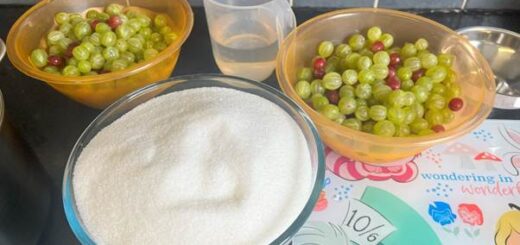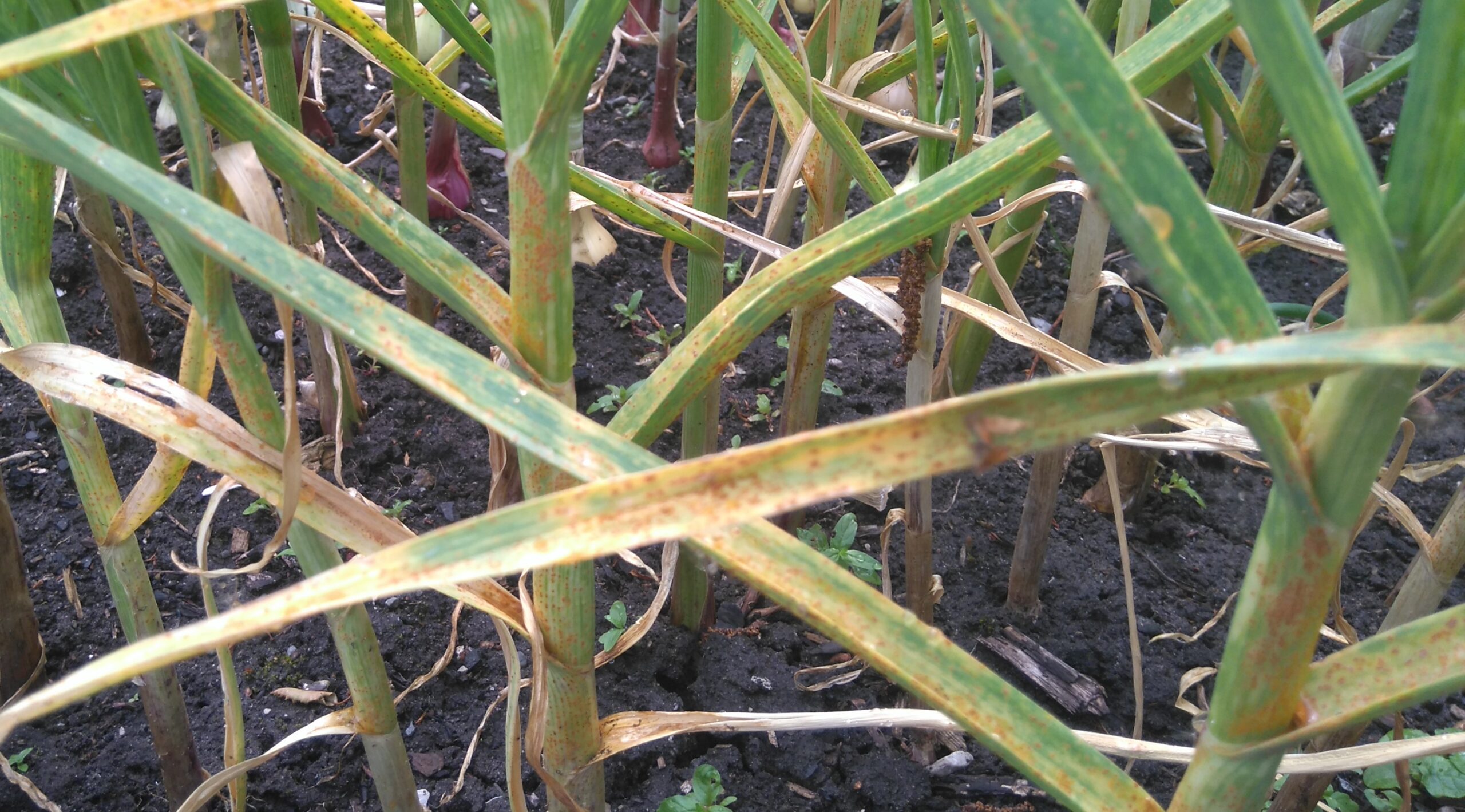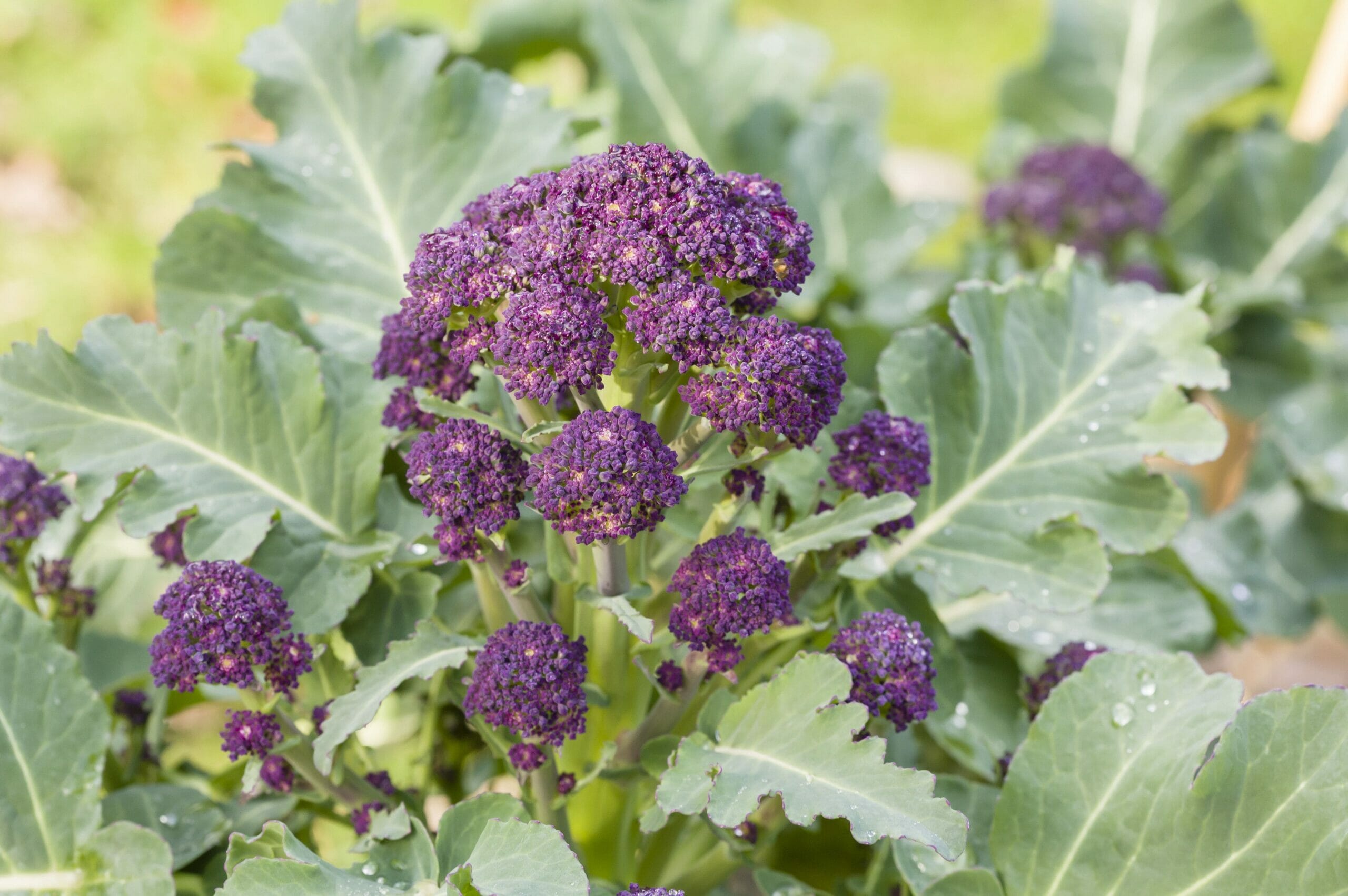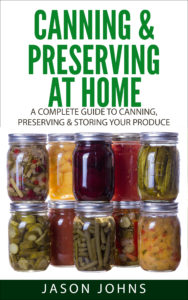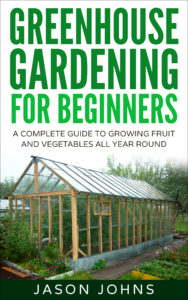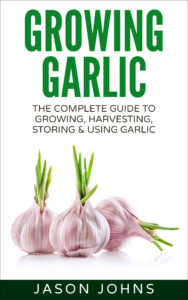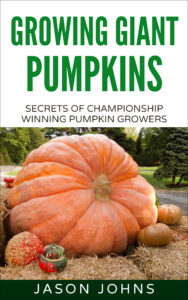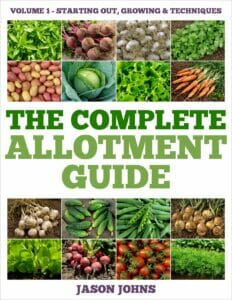The Stinging Nettle – The Gardener’s Frenemy
In the natural world, some plants command attention with vibrant colours and attractive shapes, while others subtly demand your respect with a sharp sting. Among the latter, there are few as well known or as misunderstood as Urtica dioica, the formidably prolific, yet profoundly benevolent stinging nettle. From its aggressive embrace to its long associated with humans as a food, fibre and medicine, nettle is a plant of paradoxes; a testament to nature’s ability to offer powerful healing wrapped in a lesson you won’t forget.
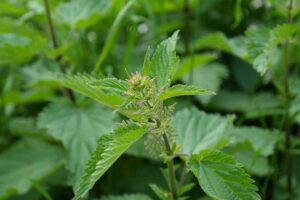
Commonly encountered on the edge of woodland, in hedgerows, scrubland and disturbed soils, the stinging nettle is soon learnt to be avoided. Yet for millennia, cultures across the world have sought this plant out, knowing that it is not just a weed, but a potent ally for health and survival.
This article delves into the folklore surrounding the nettle, tracings its historical uses, detailing its impressive medicinal properties and nutritional content. It provides practical guidance on how to safely harvest and prepare this plant so you can benefit from its many positive properties.
A Prickly Introduction: Getting to Know Stinging Nettle
Urtica dioica is a herbaceous perennial plant belonging to the Urticaceae family. It grows in dense patches, spreading from its roots and reaching heights of anywhere from 2 to 7 feet/60cm – 2.1m. It thrives in a nitrogen rich soil and is remarkably simple to identify:
- Stems – erect, green and square shaped, covered in fine hairs and the distinctive trichomes that give you the sting the plant is famous for.
- Leaves – opposite, ovate or heart shaped leaves with serrated edges (margins) and pointed tips. They are dark green in colour and usually hair, also having the stinging trichomes on them, most notably on the underside.
- Flowers – these are hard to spot, small, greenish-yellow flowers hanging in clusters from the leaf axils. Nettle is typically dioecious with male and female flowers found on separate plants. This plant flowers from late spring through to the summer.
- Trichomes – the stinging hairs are the most well-known part of the plant. They are hollow, like needles and mostly found on the stems and undersides of the leaves. When brushed against, they break, releasing chemicals, including histamine, acetylcholine, serotonin and formic acid, into the body that causes the characteristic burning, redness and itching.
Habitat:
Stinging nettles will grow almost anywhere and are found in temperate regions across the globe. It likes a moist, nitrogen rich, fertile soil and is a common sight in gardens, allotments, woodlands, riverbanks, fields, disturbed sites and pretty much anywhere it can grow.
It is best harvested from somewhere not treated with chemicals or used as a toilet by dogs. The plant spreads from its roots and can be difficult to remove once established as the roots form a tight-knit mat that is difficult to dig up.
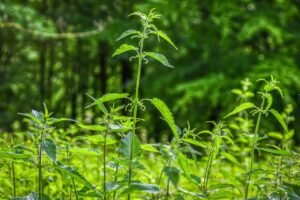
Whispers of the Wild: Mythology and Folklore
The humble stinging nettle has a strong presence in human folklore and has a unique power across many cultures.
- Protection and warning — nettle’s ability to sting, immediately lent itself to protective magic. Bundles of nettles were traditionally hung in door sways windows and even stables to ward of evil spirits, negative energy and even lightning strikes. Its sharp defence was believed to create an energetic boundary. In German and Norse traditions, the nettle was associated with Thor, the god of thunder, and was thrown into fires during storms to protect homes from damage.
- Courage and strength – facing nettle’s sting, either literally or symbolically was associated with resilience and courage. Its ability to thrive and its formidable defence makes it a symbol of inner strength and perseverance against adversity.
- Truth and confession – in some European countries, nettles were used to get the truth from a person. A person suspected of lying would hold a nettle and the sting would reveal whether they spoke the truth.
- Healing and transformation – while nettles will sting you, it has powerful healing properties and is a symbol of transformation. It represents the idea that in some instances, discomfort or challenge can lead to profound growth and enhanced well-being. It is used for purification and cleansing and so helps with spiritual transformation.
- Faerie lore – in Britain and Ireland, nettles were associated with the ‘little folk’ or faeries. While they were not always benign, nettles were believed to either be a sign of their presence or to provide protection against the mischief of the fae.
- Love charms – some folk traditions mention using nettles in love charms where its sting is used to awake desire or to bind a lover symbolically and keep them loyal.
These are just a few of the beliefs associated with nettles that our ancestors held. It illustrates how this ‘common weed’ has had such a strong association with humans.
Find out more about weeds and how they can benefit you in my book A Gardener’s Guide to Weeds.
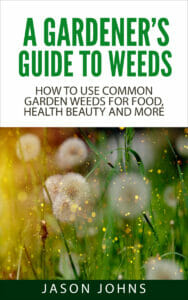
A History of Human Use
Urticaria dioica has a long and rich history with humans and has long been our companion and our nemesis.
The Romans were one of the most famous users of nettles and the practice of ‘urtication’. While it sounds uncomfortable and something we would never do, the Romans, coming from a warmer climate, struggled with the cold as the Empire pushed northwards. The soldiers came up with a solution to this problem which was to slap their limbs with nettle leaves. This stimulated the circulation and cause their limbs to feel warm.
The Greeks also enjoyed nettles and the physician Dioscorides in the first century CE documented the use of nettle as a diuretic, for skin conditions and to stimulate menstruation.
In Medieval times, the nettle was welcomed into monastic gardens where it was prized for its healing properties and as food.
Throughout its association with humans, nettles have been eaten and used as a vital green leafed vegetable. It is one of the first edible greens to appear after winter, making it particularly important to early man. It is only over time as spinach and other greens were cultivated that our tastes changed and the ‘bitters’ of nettles and other wild greens fell out of favour. Nettles were an important source of vitamins and minerals after a long, lean winter. It was commonly used in porridges, soups, stews and spring tonics.
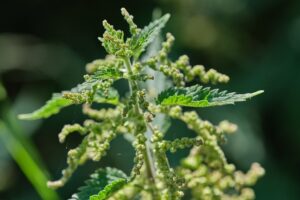
Nettles were praised by herbalists such as Nicholas Culpeper (17th century) and Hildegard von Binger (12th century) for its blood-cleansing properties, as a hair tonic and for its ability to easy rheumatic conditions and allergies. It was considered to be good for a wide range of ailments, probably due to its high levels of vitamins and minerals.
One of the most interesting uses for nettles it that it is a good source of fibres. Before cotton became popular, nettle fibres were used to create strong, durable cloth, ropes, fishing nets and even paper! During both World Wars when cotton supplies were interrupted and became scarce, Germany revived the nettle cloth industry to help cope with the shortage. Archeologists have found evidence of nettle fabric dating all the back to the Bronze Age. Nettle fibres are quite remarkable and have a very similar strength and feel to linen.
As well as making cloth from nettles, the leaves are high in chlorophyll, which can be used to make a green dye. The roots were used to produce a brown or yellow dye.
Gardeners are learning to love nettles as it makes an excellent, if somewhat aromatic, liquid fertiliser. As the nettles have so many nutrients, a fertiliser made from this ‘weed’ does your plants a lot of good.
As you can see, this weed we are all taught to avoid has had a long history with humans and has provided many benefits for use. Next time you see one in the hedgerow, remember how many benefits this one plant has.
Nature’s Pharmacy: Medicinal and Healing Properties
Modern herbalism has built on the foundations built by its predecessors and expanding up on the traditional uses for Urtica dioica. It is recognised as a versatile and beneficial herb. If you want to read more about the scientific research into this plant, check out this research paper.
There are many medicinal uses for the common stinging nettle, including:
- Nutritive tonic and trophorestorative – nettles have an exceptional nutrient profile and is one of the best herbs for building you back up. It nourishes the whole body, supports vitality, improves nutrient deficiencies and helps people recover from illness. As a trophorestorative, it works to restore proper function or organs and systems that are overworked or undernourished, something that perhaps many of us could benefit from in our stressful modern world.
- Anti-inflammatory – this is one of the things nettles are best known for as they can reduce inflammation both internally and externally.
- Internal – nettles can help treat a variety of inflammatory conditions such as arthritis, gout, fibromyalgia and rheumatism. A lot of scientific research has shown that it inhibits inflammatory pathways and reduces inflammatory cytokines.
- External – deliberately stinging yourself with fresh nettles causes a localised inflammatory response that actually reduces chronic joint pain by stimulating circulation and drawing the inflammatory compounds away from the deeper tissues.
- Antihistamine/anti-allergenic – nettles are probably the best known herb for treating hay fever. It stabilises the mast cells that release histamine, which is the compound that causes the allergy symptoms such as sneezing, watery eyes and itching. Nettles also appear to inhibit some of the inflammatory reactions that occur with allergies.
- Diuretic – nettles are an effective, but gentle diuretic, helping to increase urine flow. This helps to the kidneys to flush out waste, reduces edema (fluid retention) and is also beneficial for urinary tract infections (UTIs), cystitis and in preventing kidney stones.
- Blood cleanser (depurative) – nettles support the lymphatic system, kidneys and liver in their cleansing roles, which causes your skin to become clearer as well as improving your energy and overall vitality.
- Astringent and hemostatic – nettles have astringent properties, so it helps to constrict tissues. They are also high in vitamin K, which helps with blood clotting. This makes nettle particularly helpful in managing heavy menstrual bleeding and nosebleeds.
- Prostate health – nettle root extract is often combined with saw palmetto to manage Benign Prostatic Hyperplasia (BPH), which is an enlargement of the prostate gland in men. This combination helps reduce inflammation an improve urinary flow.
- Hair and skin health – as nettles are very high in minerals, particularly silica and it has astringent properties, it is a good treatment for a variety of skin conditions including eczema and acne. It also helps to reduce dandruff, improve scalp health and promoting health hair growth. It is a common ingredient in natural hair products.
- Blood sugar regulation – current research indicates that nettles can help regulate blood sugar levels, which could be a benefit for people with type 2 diabetes. The research is in its early stages, but the results are promising, and more human trials are required.
- Immune support – nettles are excellent at supporting the immune system because they are high in vitamin C, antioxidants and other immune modulators compounds. They are a great ingredient in any herbal tea designed as a pick me up or to help you battle colds.
As you can see, nettles have a whole host of herbal uses, which many people find surprising. They do not realise that the annoying plant that keeps stinging them is packed full of vitamins and minerals and has a multitude of health benefits.
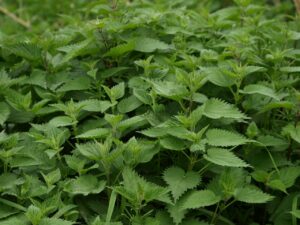
The Chemistry of Nettles
Nettles have a very interesting chemistry, and its beneficial medicinal properties come from a complex concoction of biochemical compounds.
- Trichomes (stinging hairs) – these contain a variety of compounds including histamine, acetylcholine, serotonin, formic acid and leukotrienes. While these cause the sting, they are also involved in the anti-inflammatory effects that can, through the histamine release, lead to a desensitisation over time for allergies.
- Flavonoids – including kaempferol, quercetin, isorhamnetin and rutin, these are potent anti-inflammatory and antioxidant agents. Quercetin stabilises mast cells and has a role in allergy relief.
- Carotenoids – nettles are high in beta-carotene, lutein and violaxanthin, all powerful antioxidant and precursors to vitamin A.
- Beta-sitosterol – this sterol is important for good prostate health.
- Lectins – nettles contain Urtica dioica agglutinin or UDA. This is more highly concentrated in the roots and is a protein that has anti-cancer (anti-proliferative) and immunomodulatory properties.
- Tannins – these are astringent compounds that help to stop bleeding and are beneficial in toning skin.
A Natural Multi-Vitamin
Nettles were highly prized by ancient man as they were one of the first spring greens to appear and was a vital source of vitamins and minerals after a lean winter living on meat, fish and whatever fruit, nuts of vegetables could be stored or found over winter. It is one of the most vitamin and mineral rich wild edible plants you can find.
- Vitamin A (beta-carotene) – nettles have far more vitamin A than carrots and spinach; a vitamin that is import at for the immune system, vision and the skin.
- Vitamin C – nettles contain a similar level of vitamin C to citrus fruits, and this vitamin is very important for iron absorption, the immune system and collagen synthesis.
- Vitamin K – this vitamin is important for good bone health and blood clotting. Nettles contain very high levels of this vitamin.
- B Vitamins – nettles contain several of the important B vitamins including riboflavin (B2), pantothenic acid (B5) and folate (B9). These vitamins support cell growth, nerve function and energy metabolism.
Nettles contain a number of bioavailable minerals too:
- Iron – nettles are one the best plant-based sources of iron, which is vital for red blood cell production and for combatting fatigue. As nettles have a high level of Vitamin C, it makes it easier for your body to absorb the iron.
- Calcium – this plant contains a similar level of calcium to cows’ milk, which is important for bone health, nerve transmission and muscle function.
- Magnesium – an important mineral that helps regulate blood pressure and blood sugar as well as being important in many other systems within your body. The high levels found in nettles, make it excellent for helping easy conditions such as restless leg syndrome.
- Potassium – this is important for muscle contraction, nerve signals and maintaining fluid balance.
- Silica – this contributes to healthy connective tissues, strong hair and nails, and good skin. You can also find high levels of silica in the dreaded Mare’s Tail weed that is taking over allotments across the country.
- Other trace minerals – nettles contain many other essential trace minerals including zinc, copper, sulphur, phosphorus and manganese.
Adding nettles to your diet or even starting to drink nettle tea is an excellent way to replenish essential nutrients and give yourself a pick me up.
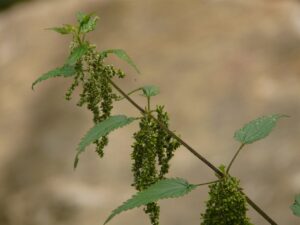
From Wild Patch to Plate – Foraging and Preparation
Harvesting nettles requires a little bit of caution, but it is rewarding and worth the occasional sting. When harvesting, always wear a sturdy pair of gardening gloves to protect your hands and a long sleeved top. You will be surprised how much you brush the nettles against your arm when you are picking then, so the long sleeved top will protect you.
You can pinch out the stems or use scissors or pruning shears to cut them, depending on what you prefer. As I have some good gardening gloves, I just pick them by hand as it saves juggling the nettle, a pair of scissors and a bag. Cloth bags or baskets are best for harvesting nettles as they will sweat when left in plastic bags. Plastic bags are okay if you are going to remove the nettles from the bag when you get home.
Young, tender plants are the best to harvest and these are available all year round, though the best time to collect them is in the spring. If you are only making tea, then older leaves are okay, but if you are eating them, then the younger leaves are less fibrous and better for eating. Nettle seeds are also valued for their nutrition and herbal benefits.
Try to find somewhere that is not near roads, farms or other areas where they are going to be soiled by pesticides or pollution. Also, look for an area where dogs cannot get near them as you do not want to be harvesting nettles from the local dog toilet.
Of course, you have to think about sustainability. While you may enjoy the nettles, many insects rely on them too. Butterflies such as the Red Admiral, Peacock and Small Tortoiseshell lay their eggs on nettles. Just take the top two to four pairs of leaves from each nettle stalk. This encourages the plant to create branches, which will have more tender shoots for you later in the season. On any nettle patch, never take more than a third of the patch to ensure that it can regenerate.
Neutralising the Sting
At this point, you may well be wondering how do you eat something that stings you. Surely, it is going to be rather painful to put in your mouth.
Well, worry not as the sting is very easily neutralised. Dip the nettles into boiling water for 30 seconds and then put them into cold water. Cooking the nettles by any method such as steaming, boiling or sautéing for a few minutes also neutralises the sting. When dried, the leaves do not sting you and blending or juicing also breaks down the tricomes.
Culinary Uses
Nettles have a mild, earthy flavour that is similar to spinach but with a richer, more ‘green’ taste. They can be used in a wide variety of dishes including:
- Soups and stews – nettles add extra nutrition and some extra flavour.
- Pesto – makes a great alternative to basil pesto.
- Purées – can be used in dips, sauces or as a side dish.
- Quiches / omelettes – chop and add to egg dishes as you would spinach.
- Infusions – nettle tea is a great way to give yourself a nutrient boost. Try sweetening it with honey or adding other herbs (I add dried rose petals and cleavers).
- Baking – dried, powdered nettles can be added to a variety of dishes such as bread or savoury muffins for an extra nutritional boost.
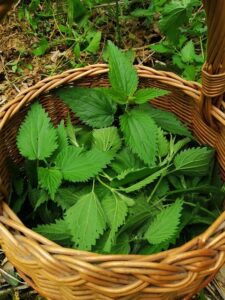
Nettle and Root Vegetable Soup Recipe
This is a great restorative soup that is full of nutrients and is excellent for a spring cleanse and to replenish your body after winter.
Ingredients:
- 1.5l/6 cups vegetable broth/stock
- 500g/4-5 cups young nettle leaves, tightly packed and thoroughly washed
- 2 garlic gloves (minced)
- 2 medium carrots (peeled and diced)
- 2 celery sticks (diced)
- 1 large onion (chopped)
- 1 medium potato (peeled and diced)
- 13g/½ cup fresh parsley (chopped)
- 1 tablespoon olive oil or butter
- Salt and pepper to taste
- Cream/coconut milk – add a splash of this if you want for added richness
- Lemon juice – a squeeze of lemon juice gives the soup a brighter flavour
- Crusty bread – perfect for serving with
Method:
- In a large pot, heat the oil/butter over a medium heat.
- When hot, add the onion and cook for 5-7 minutes until softened and translucent.
- Add the garlic and cook for another minute to release the fragrance.
- Add the carrots, potato and celery to the pot and stir well.
- Pour in the vegetable stock and bring to a simmer.
- Reduce the heat, cover and cook for 15-20 minutes until the root vegetables are tender.
- Prepare the nettles while the vegetables simmer.
- Once the root vegetables are soft, add the nettles to the pot and stir in; they will wilt down very quickly.
- Simmer for a further 5-7 minutes to cook the nettles through and to allow the flavours to mix.
- Blend the soup until it reaches your preferred consistency.
- Season to taste, stir in the fresh parsley and add the cream/coconut milk or lemon juice, if you are using them.
- Serve hot and mindfully with fresh, crusty bread.
Nettle Infusion
Nettle tea is a mineral rich, vitalising daily tonic containing a wide spectrum of nutrients that will boost your body. This is a great tonic to drink during allergy season or when you are feeling run down.
Ingredients:
- 7-10g/¼ cup dried nettle or 90g/1cup loosely packed fresh nettles
- 1 litre water
- Optional – slice of lemon, fresh mint or a teaspoon of honey
Method:
- Place the nettles into a jar or teapot.
- Pour over the boiling water and then cover with a lid to stop the volatile oils and nutrients escaping with the steam.
- Steep for a minimum of 4 hours, or ideally overnight to draw out all of the nutrients to create a beneficial infusion rather than a light tea.
- Strain through cheesecloth into another bottle, squeezing the nettles to get all the liquid out.
- Store in your refrigerator for 2-3 days and drink 1-2 cups a day warm or cold with lemon, mint or honey according to your personal preference.
Safety Considerations
While nettles are very beneficial and it is generally a safe herb to consume, there are some things you must consider.
- The sting – the initial sting can be irritating, but do not rub it as this will just embed the hairs further in your skin. Wash the area with soap and hot water. A paste of baking soda and water will help neutralise the sting.
- Pregnancy and breastfeeding – nettles are often prescribed by experienced herbalists as a nutritive tonic during the first trimester and during the first trimester. However, it does contain a uterine stimulant, and it can be risky to the pregnancy to use this herb during pregnancy or breastfeeding.
- Diuretic and blood thinners – as you know, nettles are a diuretic, so anyone taking a diuretic medication should consult their doctor as nettles may enhance the effect of the drug. Due to the Vitamin K content of nettles, anyone on blood thinners should also consult a medical professional before consuming nettles.
- Blood sugar – diabetics and anyone on blood sugar lowering medication should consult with their doctor and monitor their blood glucose closely as nettles can lower blood sugar levels.
- Kidney conditions – anyone with kidney disease or who is prone to fluid retention should consult a medical professional before using nettles medicinally.
- Individual sensitivity – although rare, some people may be allergic to nettles, so always test yourself with a small amount first to ensure you are okay with this plant.
If you are on any medications or have any health conditions, always seek advice from a clinical herbalist or qualified healthcare professional before using nettles medicinally.
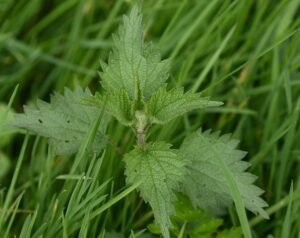
Conclusion
The fierce stinging nettle embodies a powerful paradox: a plant that defends itself with a formidable sting but offers an abundance of healing and nourishment. Nettles have been a vital component in human survival in ancient times and is now being recognised as a powerhouse of vitamins and minerals in our modern world. It is a testament to the profound wisdom to be found in the natural world.
Luckily, the stinging nettle is an easy to identify plant and by learning how to harvest and use it, you can a valuable ally for your physical well being and build a connect to the plant kingdom and traditional knowledge.
The next time you pass a patch of nettles, look beyond the sting and see the unseen guardian, the provider and the healer, waiting to share its gifts with you.

